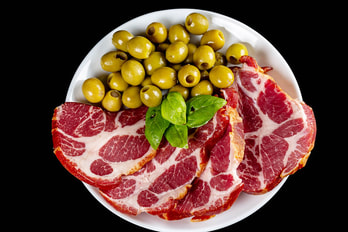Vegetarian Capstone Project
During my final year at Watkinson, I will be completing my Global Studies Capstone project on vegetarianism. Finding the answers to question like, "What does it take to be a healthy vegetarian?", and "How would the world change if everyone became a vegetarian?". Through extensive research on the production and health benefits of vegetarian products, I will create a capstone project that advertises what a vegetarian lifestyle looks like.
Capstone Paper
|
|
HighlightsMy paper on The Impact of a Vegetarian Diet on the Human Body and the Environment is split into five sections containing specific information surrounding the topic of vegetarianism. From the paper, there are two highlights that peaked my interest. The first one focuses on the effect beef has on the human body. Recently, eating beef on a regular bases has been shown to increase the likelihood of contracting a heart disease by 3% to 7%. If you are interested in reading more open my paper and scroll to page two. The second highlight shines light on the amount of water it takes to create 441 pounds of boneless meat. Producing 441 pounds of beef takes 820,000 gallons of water; and the average cow weighs 2,000 pounds. To continue reading, head to page six.
|
Excerpts from my paper
"In recent studies, beef has been proven to have the ability to increase the likelihood of someone contracting heart disease by 3% to 7%." (Page 2)
"If done properly, a vegetarian diet helps the immune system and helps prevent inflammation. This is thought to be due to the antioxidants, fibers, and vitamins within fruits, vegetables, grains, nuts and seeds, and dairy products." (Page 3)
"Even though they consume 600-2000mg of cholesterol a day - the American Heart Association recommends people each 300 mg a day - Maasai’s have a low rate of disease. This is due to a fatty acid binding protein called FABP1." (Page 4)
"One pound of beef takes 2,500 to 5,000 gallons of water to produce; pork 1,630 gallons; lamb 1,188 gallons; and chicken 510 gallons."(page 6)
"If done properly, a vegetarian diet helps the immune system and helps prevent inflammation. This is thought to be due to the antioxidants, fibers, and vitamins within fruits, vegetables, grains, nuts and seeds, and dairy products." (Page 3)
"Even though they consume 600-2000mg of cholesterol a day - the American Heart Association recommends people each 300 mg a day - Maasai’s have a low rate of disease. This is due to a fatty acid binding protein called FABP1." (Page 4)
"One pound of beef takes 2,500 to 5,000 gallons of water to produce; pork 1,630 gallons; lamb 1,188 gallons; and chicken 510 gallons."(page 6)
Social Justice Day Workshop
|
|
For my second project surrounding my Global Studies capstone project, I made a social Justice day workshop with my classmate Owen Chambers. Social Justice Day is a day at Watkinson that allows students to educate students and faculty on social justice issues. Owen and I decided to create a slide show on climate activism. The presentation itself is around 20 to 30 minuets long, and there is a game we have planned for the student to play. We created this presentation by doing research and using google slides to piece together the final product. My capstone is linked to the presentation in mutable ways. I used information about the production of food, new technology, and water use to help with the research aspect of the social justice workshop presentation. The document on the let has out research and the slideshow for our presentation.
|
Life Cycle of a Vegetarian and Meat Based Dish
|
|
For my third and final product, I decided to create two similar dishes. The rice and broccoli stayed the same for both dished, except for the protein. The fist dish has tofu and the other has chicken. I looked at the environmental impact each food item has. In the end, the plate with the chicken emits more CO2 and uses more water.
|


